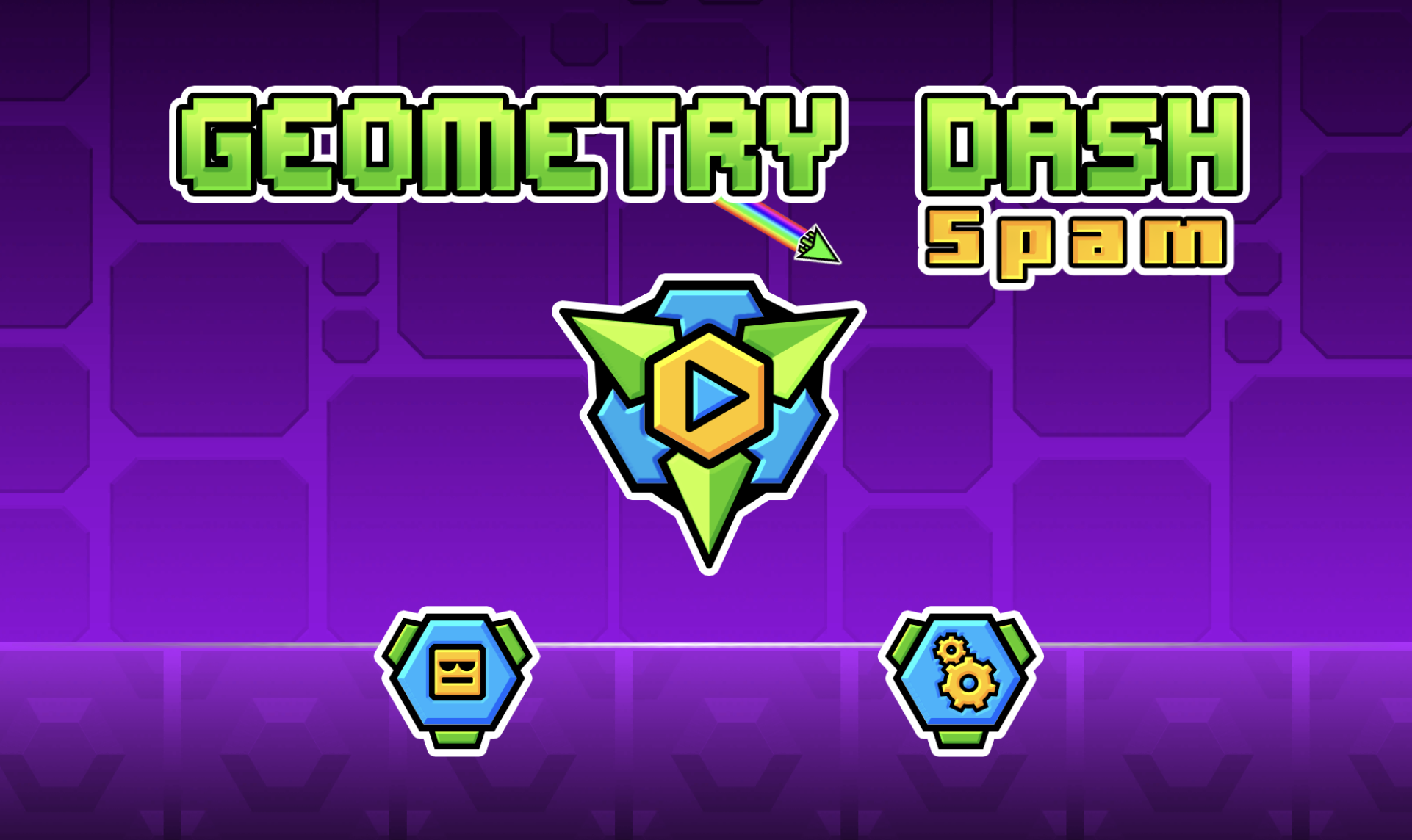Design the circuit, perfect the lap
Keep exploring
Continue your Dino game session with more narrative adventures, action trials, and puzzle standouts.

Chiikawa Puzzle

Speed Stars

I'm Not A Robot

Fireboy and Watergirl: Fairy Tales

Geometry Dash Spam

Fireboy and Watergirl: Crystal Temple

Retro Bowl 26

Human Expenditure Program

Clasherdle

Stick It to the Stickman
Polytrack — build, race, iterate, repeat
Craft your speed playground, then outdrive your own shadow
Polytrack turns your browser into a clean, minimalist workshop where creativity and driving skill meet. Instead of only learning someone else’s layout, you piece together your own curves, jumps, and banking, then put the car on the same asphalt to see if your blueprint truly flows. With instant resets and clear visual feedback, Polytrack keeps you in the zone—refining lines, adjusting modules, and carving seconds away without the friction of loading screens or menu mazes.
Why this time-trial sandbox feels endlessly replayable
The heart of Polytrack is the loop of design–test–iterate. The editor makes it simple to snap track segments together into coherent routes; the driving model is responsive enough to reward precise inputs yet forgiving enough to encourage experimentation. After a lap, ghost replays show exactly where pace was gained or lost, turning each run into a study session. Because Polytrack emphasizes clean visibility and smooth physics, you can quickly diagnose mistakes: braking too early into a cambered sweeper, pinching an apex on a chicane, or committing to throttle a split-second late over a crest.
Beyond pure speed, Polytrack celebrates creativity. A tight technical ribbon rewards feathered throttle and short bursts of trail-braking. A big-flow course with generous banking supports high commitment and long, satisfying drifts. A stunt-focused build invites audacious jumps and rhythm sections that test landing stability. Whatever your style, the tools in Polytrack allow you to sketch a route that amplifies it.
Getting faster without grinding—practical hot-lap habits
Start with a short loop you can lap in under forty seconds. In Polytrack, compact courses accelerate learning: you return to the same braking zones again and again, calibrating muscle memory. Use the instant reset to attack a single sector ten or twenty times until your ghost shows consistent improvement. Next, layer in a medium layout where carrying momentum through linked corners matters. Polytrack’s ghost rivals help you visualize better exits; if your transparent opponent drives away on every straight, the issue is corner exit speed, not top speed.
Focus on three fundamentals. First, brake in a straight line as much as possible; Polytrack rewards tidy weight transfer, and you’ll feel the difference in car stability. Second, aim for late apexes on tighter corners to maximize run onto following straights. Third, choose steering inputs that are smooth rather than frantic—small corrections keep the tires in their happy window. After you internalize these basics, experiment: dab the brakes to rotate the chassis before turn-in, or lift briefly to settle the car when crests destabilize it. Polytrack is generous with testing, so each micro-adjustment can be verified within seconds.
Track building that teaches flow
Good course design makes you a better driver. In Polytrack’s editor, think in sequences rather than isolated features. A sharp hairpin feeding a jump will punish overeager throttle; a long bank that tightens late demands patience. Use gentle S-curves to encourage rhythm and mid-corner throttle modulation. When placing ramps, leave enough approach distance for the car to square up; otherwise, landings get messy and bleed time. Polytrack’s snap system keeps geometry clean, but spacing still matters—give drifters room to catch slides and time-trial purists clean edges to clip.
As you iterate, watch your ghost at normal speed and then at half speed. Polytrack’s replay clarity highlights line quality and throttle timing. If your ghost gains a car length into every banked right-hander, compare steering traces and turn-in points. If your ghost lands straighter after a jump, examine your pre-load angle and brake taps on approach. The beauty of Polytrack is that these analyses are lightweight; a couple of resets later, the insight becomes a faster lap.
Controller feel and consistency
Whether you prefer keyboard or a gamepad, Polytrack prioritizes stable, predictable inputs. On keys, think in taps and pulses: brief presses to adjust yaw, longer presses to commit through medium-speed bends. On a gamepad, subtle analog steering allows tiny line corrections that pay off over a lap. If you overcorrect, add a short lift to re-center grip before reapplying throttle. Polytrack makes restarting painless, so dialing in consistency becomes a satisfying mini-game of its own.
Building for different skill levels
When sharing a course, consider who will drive it. For newcomers, construct a flowing figure-eight with gentle banks and clear sightlines. Polytrack’s modules snap in ways that make readable track language: wide entries, forgiving exits, and generous runoff. For intermediate players, tighten radii and introduce camber changes that reward anticipation. For veterans, combine late-apex hairpins with rhythm jumps that punish hesitation. In every case, test with your ghost from a cold start to ensure the first lap offers guidance without guesswork. Polytrack shines when a build teaches through its geometry rather than text prompts.
Time attack psychology: staying calm under the clock
Speed comes from composure. If frustration creeps in after a string of near-misses, shrink the goal: target a single tenth in one sector. Polytrack’s immediate restarts keep you alive to the possibility that the next attempt is the one. Create rituals—count down before a push lap, breathe out on corner entry, or commit to three focused tries before any edit. Because Polytrack never punishes experimentation with long reloads, you can protect your mindset by moving fluidly between building and driving.
Sharpening competitive edges with ghosts and friends
Racing your own data transforms practice into competition. Chase your personal best to reinforce winning habits. Then download or load a faster ghost to expose weaknesses you didn’t know you had. If you fall behind on exits, your throttle application is late; if you lose ground mid-corner, your line is too tight; if you close only on braking, your entries are good but exits waste grip. Polytrack turns these patterns into clear action items. Share a tricky course with friends and trade replays; watching someone else survive a brutal chicane can reveal a safer braking marker or a straighter approach you overlooked.
Performance, readability, and iteration speed
Minimalist visuals are not just an aesthetic choice. Clean color contrasts make apexes legible at speed; crisp shadows help depth perception over jumps; and restrained effects keep your focus on car placement. Polytrack’s lightweight presentation boosts frame rates on modest hardware, ensuring the car feels consistent lap after lap. That consistency keeps feedback loops tight: if a change makes you faster, confidence rises; if a change hurts, revert and try another angle. Polytrack thrives on that rapid hypothesis testing that pushes your personal ceiling one notch at a time.
From five-minute sessions to deep design nights
Sometimes you have a spare moment before a call. Jump into Polytrack, reset a few times, and try to beat a sector delta by a tenth. Other nights you’ll sink an hour into sculpting a flowing hillside ribbon, nudging camber and adjusting ramp spacing until the rhythm clicks. The same frictionless tools power both moods. Polytrack embraces the player who wants quick satisfaction and the creator who wants to ship a signature track that friends will remember.
Who will love it
If you enjoy time-trials in simcades, rhythm in arcade racers, or modular level editors in creation games, this is your sweet spot. Polytrack grants the ownership of a builder and the adrenaline of a racer in one package. Drifters can stage long arcs across banks; precision drivers can stitch perfect lines through technical kinks; designers can publish gauntlets that dare rivals to keep it clean. Above all, Polytrack respects your time: every feature exists to shorten the distance between idea, attempt, and improvement.
When you’re ready, publish. Nothing galvanizes skill like knowing others will chase your split times. As the community grows, you’ll discover clever track language—how creators use near-misses to thrill without cheap crashes, how they hide straights inside sweepers, how they place jumps that reward early commitment. Polytrack becomes a conversation conducted at 200 kilometers per hour, where every corner says something about the person who built it.
So open the editor, snap a starting straight, add a gentle right with late camber, and place a ramp that lands into a tightening left. Give it a handful of test laps, watch your ghost, and shave that first second. In short order, Polytrack will have you thinking like an engineer and driving like a surgeon. One more lap is never just one more lap—and that’s exactly why Polytrack is irresistible.
Design the circuit, perfect the lap is ready to play
Design banked turns and jumps, then chase ghost laps in Polytrack. Reset instantly, master tight lines, and share custom courses in a fast browser racer.
Share Design the circuit, perfect the lap
Spread the word, invite friends, or bookmark this page to revisit the story whenever you need it.